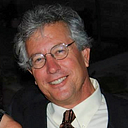SAQs for Apush Topic 6.10 — Development of the Middle Class During the Gilded Age
3 min readApr 3, 2021
Five questions designed to help students review for the annual exam and that relate to the significant growth in the size of a class of Americans who earned between two-thirds and double the median household income.
- During the Gilded Age, a distinctive middle class developed. One factor explaining the development of this distinctive middle class is the need of corporations and factory owners for “managers.” Another factor — the need of corporations and factory owners for “clerical help.” In other words, the Gilded Age didn’t only produce misery for those who worked in factories: as factories and commercial enterprises expanded, the Gilded Age produced an army of bookkeepers, managers, and secretaries to keep business running smoothly with this army consisting of not only men but also women. What “indispensable clerical tool” was invented in the Gilded Age and was used mostly by women (because it was thought that women’s smaller hands seemed ideal for operating this invention?
- During the Gilded Age, the members of the distinctive middle class that developed found that, as their income rose, the amount of leisure time activities they and their families could enjoy also increased. For those who had the time and money to play, cities offered many leisure-time opportunities, including theatre and vaudeville shows, amusement parks, circuses, dances, and sporting events. What is a vaudeville show? What sporting event was not only born in the Gilded Age, drew the most attention, but is also still extraordinarily popular today? Name and briefly describe one of the most famous Gilded Age circuses?
- During the Gilded Age, members of the middle class who found their way into the upper-middle class (and beyond) were often encouraged to use their fortunes to improve society. Evidence in support of this claim is Andrew Carnegie's Gospel of Wealth.” In this book, Carnegie promoted the idea that, during their lifetimes, the rich should give away their money to benefit the public. What word did Carnegie use, and that is still used today, to describe the desire to promote the welfare of others, expressed especially by the generous donation of money to good causes?
- During the Gilded Age, one other factor explaining the development of this distinctive middle class was the increase in access to educational institutions. Where were most of these new educational institutions built during the Gilded Age? In the New South? West of the Appalachians? Or in the cities? Also, did the number of teacher-training schools during the Gilded Age increase? Did more and more Americans support tax-supported public education during the Gilded Age? Did compulsory attendance to school start to be required? Was there an increase in the number of high schools built? Did the notion of Kindergarten begin to gain strong support? Was there a drop in the illiteracy rate?
- During the Gilded Age, the development of a distinctive middle class helped expand consumer culture. What is mean by the term “consumer culture?”
